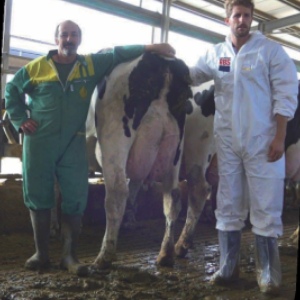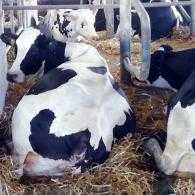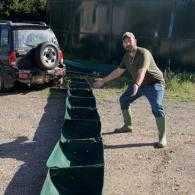For Sergio and Roberto Ancellotti, a number of breeding and welfare improvements has led to improved herd health, fertility and production.
The herd is genotyped in order to serve the best performing cows with sexed dairy semen for retaining in the herd. The remainder is served with sexed beef semen, resulting in an increasingly productive herd. This helps to keep costs down, reaching the Italian production quota with the lowest number of cows, and making more space available to the cows in the herd, while also reducing the environmental impact of the business.
Alongside this, in order to improve fertility, they have installed a cooling system with eight daily cycles, which follows the Flamenbaum method, resulting in a more productive, healthy and fertile herd even during the warm summer weather. They have also installed photoperiod control, in order to completely eliminate the dark period from October to March, which has enabled more consistency of the productive and reproductive performance of the herd.
The installation of a new calf house, with a double summer and winter ventilation system, alongside heated drinkers for the winter months, and a colostrum pasteurization and thawing system, means a colostrum bank of over 25% degrees Brix is always available. As a result, data obtained from electronic weighting at weaning and at 11 months, showed 1 kg average DLWG for the entire period, and neonatal mortality below 5%.

Sergio and Roberto Ancellotti farm in the Parma region, producing milk to be processed into certified mountain Parmigiano Reggiano. For this, the farm has to meet specific animal welfare criteria:
- CReNBA* 2018: 98.42 points
- CReNBA 2019: 98.85
- Classy Farm 2020: 99 points
* The CReNBA – Centro di Referenza Nazionale per il Benessere Animale (National Reference Center for Animal Welfare) - has created a public standard aimed at monitoring the state of animal welfare of beef and dairy cattle farms. A CReNBA qualified veterinarian carries out the assessment on-farm, and compiles data that is sent to the CReNBA itself, which processes the data and calculates the percentage of compliance. Farms that, through the data processing certificate issued by CReNBA, show that the minimum score required by the CReNBA standard has been exceeded are judged to be compliant.





